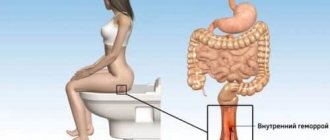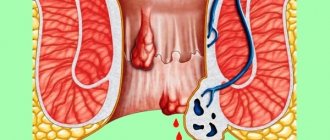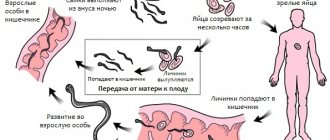Is there a fever during poisoning?
Of course, when poisoning occurs, there is most often a fever. The temperature of food poisoning may increase due to exposure to toxins produced by microorganisms. These are mainly protein substances, and due to foreign protein, the process of disturbing the thermal balance increases. Microorganisms can enter the intestines with poor-quality food.
When poisoned by natural poisons or chemicals, the temperature may also increase. At the same time, the body enters into a fight against foreign agents, failures of various systems occur, and as a result, an increase in fever.
It is rare, but it happens that the readings on the thermometer are elevated due to strong self-hypnosis: I have been poisoned, I feel bad, I have a fever. In such cases, hyperthermia is psychosomatic in nature.
Reasons for rising temperature
With food poisoning, the temperature does not appear immediately. The rate of increase directly depends on the poison that is absorbed into the blood. As soon as intoxication occurs, coccus bacteria begin to form in the digestive tract, which causes fever.
Fever is an excellent defense mechanism that is automatically produced in the body to protect it from harmful substances. When the temperature rises, blood circulation and metabolism improve, and the movement of fluids throughout the body accelerates. Thanks to such processes, toxins quickly break down and are eliminated from the body. During fever, sweat production increases, skin pores expand, which ensures the removal of toxins. As soon as the readings on the thermometer increase, the body becomes a negative environment for the development of pathogenic bacteria and they begin to die.
Why might your temperature rise?
As a result of poisoning, when the body's functioning is disrupted, adults and children often develop diseases accompanied by hyperthermia:
- Acute gastritis. With this disease, the gastric mucosa is inflamed. Inflammation occurs due to irritating effects of toxins or harsh chemicals. A person feels severe pain in the stomach and nausea. Vomiting is possible. Temperature with gastritis is possible, but rarely exceeds 37.5 °C.
- Intestinal infections (dysentery, salmonellosis, and many others), in which the intestines are inflamed. There is general intoxication due to the activity of pathogenic microorganisms. Diseases develop after microbes enter the human body with poor-quality food or dirt (hands, fruits, berries, etc. were not washed). The temperature for bacterial food poisoning can reach 38 °C. This is how the body tries to cope with the infection on its own, which indicates the normal functioning of the immune system.
- Pancreatitis is inflammation of the pancreas. It is this organ that is one of the first to respond to intoxication. In the acute form of the disease, a person suffers from severe girdling pain in the abdomen, and purple spots appear around the navel. Fever - up to 38.5–39.5 °C. Pancreatitis is treated exclusively by surgery.
- Dehydration (due to excessive and prolonged diarrhea and vomiting). A critical drop in fluid levels in the body indicates severe intoxication. A person feels severe weakness, his skin becomes dry and flabby, his eyeballs sink. The blood thickens, which leads to disruption of the cardiovascular, respiratory systems and some functions of the nervous system.
If the temperature rises due to poisoning, this is a symptom indicating the serious condition of the victim. The cause of intoxication can only be determined by a doctor after an examination.
Why is high temperature dangerous?
Much here depends on the duration of hyperthermia and how severe it is. But the particular danger is that all organs and systems can be affected by a high fever:
- Cardiovascular: with each increasing degree, the number of heart contractions increases, the organ works with overstrain, vascular spasm occurs, and blood pressure may increase.
- Respiratory: inhalations and exhalations become more frequent and become shallow.
- Nervous: the patient feels exhausted, constantly wants to sleep, experiences headaches, and in children, due to the high temperature, seizures may develop.
- Digestive: appetite disappears or decreases, salivation decreases, dry mouth appears, and constipation develops due to lack of fluid.
Extreme heat also has a negative effect on metabolism. As a result, the breakdown of proteins, fats and carbohydrates begins to prevail over the processes of synthesis. During laboratory testing, ketone (acetone) bodies are observed in the blood, which are a consequence of metabolic disorders.
Interruptions in the water-electrolyte balance due to high temperature manifest themselves in the form of urination disorders in the direction of increased frequency. Then less urine is produced, because sodium accumulates in the body, retaining fluid.
Due to fever, provitamins and vitamins in the body are destroyed, and this leads to vitamin deficiency.
What temperature is possible in case of poisoning?
The temperature can be low, normal or high, but it depends on the cause of the poisoning:
- with botulism, escherichiosis - most often normal or slightly elevated temperature, which remains so when the disease is erased, mild or atypical;
- subfebrile - within 37–38 °C;
- moderate temperature - between 38–39 °C (most often observed in case of poisoning);
- high and very high (39–40 °C).
In case of poisoning, it is extremely rare, but a hyperpyretic temperature of 41 ° C is possible.
Low
This phenomenon is called hypothermia. The temperature is lowered and does not exceed 36 °C. Hypothermia is possible for the following reasons:
- in case of alcohol poisoning (low-quality alcohol or alcoholic coma);
- chemicals;
- poisons, toxins;
- medicinal herbs that can have a toxic effect.
Body temperature can also become low due to a lack of vitamin C and some important microelements.
A low temperature in case of poisoning in humans is accompanied by a weakened state, which manifests itself:
- dizziness;
- drowsiness;
- pale skin and cold sweat;
- numbness of the limbs;
- slight tremor of the fingers and many others. etc.
These manifestations may be supplemented by signs characteristic of specific poisonings, if low temperature is a symptom of intoxication.
High
With hyperthermia, the patient's body actively fights against toxins that cause inflammation after poisoning.
The temperature rises to 37–37.5 °C mainly due to ordinary food intoxication, and above 38 °C - due to infectious poisoning. This is how the body tries to survive pathogenic microbes by creating a microclimate that is unfavorable for their life. In severe cases of bacterial poisoning, fever can reach 40 °C.
Temperatures in case of poisoning reach high levels in the following cases:
- in case of microbial intoxication of the body (spoiled food, expired products, fruits cut in the store - watermelon, melon, etc.);
- in case of non-microbial poisoning (natural poisons);
- in case of chemical poisoning (paint, cleaning products, medications, toxic fumes, etc.).
High temperature is both good and bad. It is important as a way for the body to fight infection. At the same time, in the heat, blood vessels dilate, and toxins are removed more easily. But hyperthermia is also dangerous, especially for children and older people.
Types of poisoning
Intoxication is sometimes caused by several reasons. A high temperature is observed in the following situations:
- Consumption of pathogenic microorganisms and toxic substances in food;
- Consumption of food products that have expired;
- Poisoning by fruits, vegetables and melons with a high concentration of nitrates - watermelon, melon, carrots, etc.;
- Intoxication with poisonous mushrooms and plants;
- Alcohol abuse;
- Exceeding the daily dosage of medications;
- In case of carbon monoxide poisoning;
- Working with paint in an unventilated area or for a long time;
- Intoxication with salts of heavy metals - lead, mercury, manganese;
- Poisoning with pesticides.
The listed poisonings have common symptoms - nausea and vomiting, diarrhea, muscle weakness, headaches with dizziness, fever with chills. Signs appear in different ways. In time from 2 hours to 6, a reaction is possible the next day.
What to do if the temperature rises due to poisoning
The main thing is not to panic. Fever is not an independent disease, but only a symptom of problems in the body. If a person is poisoned, and it rises due to infection or toxins that have entered the body, this means that help for such poisoning should be directed to eliminating the cause of the poisoning (i.e., removing toxins).
To do this, you need to carry out a series of detoxification measures, including gastric lavage, drinking water for the patient, sorbents, laxatives, etc.
Is it necessary to lower the temperature?
There is no need to rush to lower the temperature (if it has not yet reached critical levels) at the first signs of an increase. During hyperthermia, the body produces interferon, which helps defeat the infection. Therefore, you should not interfere with the body’s natural fight. As soon as the cause of the poisoning is neutralized, the fever will subside on its own.
What to do if a person has a fever:
- Do not reduce the fever of an adult or child over 3 years to 38.5 °C (at these levels the body is actively fighting);
- above 38.5 °C - shoot down;
- in children under 3 years of age it can be knocked down at 37.7 °C (especially if there have been convulsions).
It is advisable to try to bring down the temperature in case of poisoning if all the measures taken to provide assistance (gastric lavage, etc.) did not bring relief. When the temperature rises to high levels, it is impossible to bring it down or the effect is very short-lived - urgently call a doctor. In such cases, the body can no longer cope on its own, and the help of a specialist is needed.
In what cases is hospitalization required?
A person is hospitalized if:
- temperature above 38–39 °C lasts longer than 2–3 days and does not go down;
- there were convulsions;
- the patient's condition is serious;
- diarrhea and vomiting do not stop;
- there are signs of dehydration;
- blood pressure dropped;
- shortness of breath appeared;
- the patient constantly wants to sleep;
- have stomach pain;
- consciousness is impaired;
- the anterior wall of the abdomen is tense.
During poisoning with such symptoms, the patient urgently needs help, which can only be fully provided in a hospital.
Treatment of intoxication
Every patient thinks about how to bring down the temperature in case of poisoning. It is not recommended to fight a temperature that has not reached 38°. This is how the human body responds to the condition after poisoning. It exhibits resistance to pathogenic microorganisms. When taking antipyretic drugs at this stage, the immune system is suppressed. Subsequently, it will be unable to fight harmful viruses and toxins. The person will get sick often.
Temperature is a specific manifestation. Fighting it as a symptom that appears after intoxication is not entirely correct. When dealing with food poisoning, the first thing you need to do is find the cause. Therefore, treatment should primarily be aimed at removing pathogenic microorganisms and toxins. It is necessary to do a complete cleansing of the body.
After signs of intoxication appear, patients think about how long the temperature should last. It is worth noting that each person has a different body. The patient himself must feel and feel his state of health. A temperature of 37.2-37.4° is considered natural for the recovery period, which lasts for two to three days. If the temperature persists for more than one week, you should consult a specialist.
When the temperature changes, the patient may experience chills.
This condition manifests itself in the form of pain, swelling of the ligaments, and headache. To relieve chills it will help:
- Body massage with healing ointments. After the massage, the patient must be covered with a warm blanket.
- Natural drinks can help relieve chills. The main thing is that they are rich in vitamins. Consumption of fruit drinks, compotes and freshly squeezed juices is allowed.
- You can drink warm tea without adding granulated sugar. Whole cow's milk, natural honey or lemon are added to it.
Gastric lavage
For this, special emetics like rehydron, saline or soda solution, and potassium permanganate are used. Prepare about two liters of the mixture. Drink at least 0.5 liters at one time. The patient then presses on the tip of the tongue. The procedure must be done until the rinsing solution becomes clean.
Gastric lavage is prohibited for small children under five years of age. This procedure is performed using a probe.
Adsorbents
| Name | Description | Contraindications | Cost, rub |
| Activated carbon | Sold in tablet form. Recommended for intoxication and flatulence. | Contraindicated for people with stomach ulcers. | From 19 |
| Diosmectite | Able to heal the esophagus and intestines. | Prohibited for people with intestinal obstruction. | From 126 |
| Smecta | Sold in powder form for suspension. | The drug is prohibited for people with fructose intolerance. | From 149 |
| Enterosgel | Recommended for intestinal infections and intoxication. | Prohibited for patients with intestinal atony. | From 352 |
How to lower the temperature
There is no need to rush with this. Before taking the pill, it is better to set the thermometer again, and if its readings are more than 38.5 °C, you can take the medicine. But you need to understand: even the best antipyretic will only give a temporary effect and will in no way contribute to recovery after poisoning, since it does not destroy the cause of intoxication.
Drugs that can be taken as antipyretics:
- Paracetamol;
- Products based on Ibuprofen (Nurofen, Ibuklin, etc.).
Only a doctor can prescribe fever medications for children. Usually these are the same drugs, but in a lower dosage. Under no circumstances should children be given analgesics and medications based on Aspirin or Amidopyrine, since these drugs may cause adverse reactions in the body.
Dosage forms for children are more varied: these include suppositories, syrups, and tablets, convenient for any age. Preference is given to rectal medications (suppositories), since oral medications after poisoning, once in the affected stomach, can cause additional problems.
Did you have a fever when you were poisoned?
Treatment of poisoning with fever
Doctors do not recommend using any antipyretics if the thermometer shows no more than 38.5 °C. Indeed, in this case, high temperature is a helper, and not a source of danger.
Food poisoning up to 38 °C is treated according to the general scheme. After relief of the body's condition, this indicator returns to normal within the first day.
Let us consider in detail how to treat food poisoning with fever.
- Gastric lavage with plenty of salted water or a slightly pink solution of potassium permanganate.
- Taking adsorbents - activated carbon at the rate of 1 tablet per 10 kg of weight, Enterosgel, Polysorb MP and other drugs.
- Laxative – 30 grams of magnesium or sodium sulfate in 400 ml of water.
- Cleansing enema with saline solution or decoction of chamomile and calendula.
- Drink plenty of water - boiled water, a decoction of herbs (chamomile, calendula, St. John's wort). At the same time, take into account that for every degree the temperature rises, you need to drink an extra liter of liquid.
It is also not recommended to stop diarrhea with the help of fixative drugs - this will interfere with the removal of toxic substances from the body. The first day after food poisoning with fever, a starvation diet is used as treatment. On the second day, eat bland food - liquid porridge, mashed potatoes, hard-boiled eggs.
How long does the temperature last
The temperature can last from 1–2 days to a week. For dangerous food poisoning (for example, septic salmonellosis) - up to a month. But this is generalized information, and in each specific case everything will be individual.
But with any poisoning, the heat will not decrease until the toxins are eliminated. Until the body is cleansed of poisons or microorganisms, there can be no talk of recovery (and reduction of fever, of course). For this purpose, completely different drugs are prescribed - sorbents, astringents, sometimes antibiotics, etc.
Temperature is not always a reason to panic, but it cannot be ignored either. The human body is very smart and knows how to signal if something is wrong with your health. You just need to listen to him and act according to medical instructions.
How to help a child with fever after intoxication?
In case of poisoning (especially if we are talking about food poisoning), one of the typical symptoms is a high temperature in a child. Modern medicine in this case does not recommend treatment at home - if the child has contracted a serious infection, then delaying going to the hospital can only worsen the condition of the little victim.
Potential actions:
- Drinking water – mineral or regular . It is recommended to carry out at high temperatures and severe dyspeptic disorders with vomiting and diarrhea, when the child loses a lot of fluid. Can be used for food poisoning, but prohibited in cases of toxicity with cumulative poisons with strong chemical activity that affects mucous membranes;
- Access to fresh air . In case of poisoning with a high temperature, the baby should not be tightly wrapped in blankets, despite the chills - it is better to change him into light, breathable cotton clothes and provide a flow of fresh air in the room;
- Drugs . It is recommended to use paracetamol or ibuprofen, with a dosage of 100 to 250 milligrams per single dose. If there is no effect or prolonged destabilization of temperature values (a gradual decrease due to medications, immediately followed by a sharp increase again), it is necessary to call an ambulance home and wipe the child with a wet towel to partially cool the hyperemic skin. At very high temperatures (over 41 degrees), taking classical non-steroidal anti-inflammatory drugs has practically no effect - in this case, before the arrival of the medical team, you can reduce the abnormal value once by taking nimesulide in children's form (for example, Nimesil emulsion or Nise syrup).











